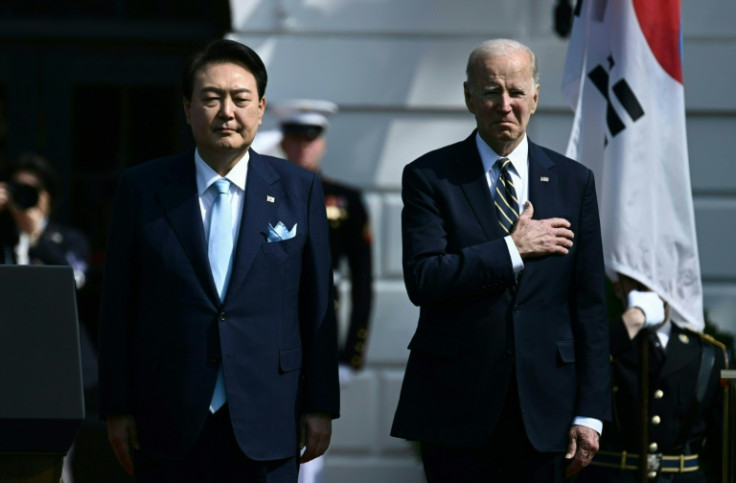US To Deploy Nuclear Weapon-Armed Submarine In South Korea Following President Yoon's Visit

KEY POINTS
- The deployment is part of the U.S. and South Korea's deal called the Washington Declaration
- The U.S. and South Korea will also create a Nuclear Consultative Group
- South Korea vowed against pursuing a nuclear weapons program
The United States has committed to deploying a nuclear-armed submarine in South Korea following the state visit of South Korean President Yoon Suk Yeol.
The commitment is part of a deal called the Washington Declaration announced by President Joe Biden during a news conference on Wednesday. It will be the first time the U.S. is deploying a ballistic submarine in South Korea since the early 1980s.
"The United States will further enhance the regular visibility of strategic assets to the Korean Peninsula, as evidenced by the upcoming visit of a U.S. nuclear ballistic missile submarine to the ROK, and will expand and deepen coordination between our militaries," the Washington Declaration read.
In addition, Biden committed to giving South Korea a central role in the strategic planning for the use of nuclear weapons in case it gets into conflict with North Korea by creating a Nuclear Consultative Group. In return for the submarine, President Yoon has agreed not to pursue a nuclear weapons program.
However, the Washington Declaration emphasized that the sitting American president will have the sole authority to decide whether to launch a nuclear weapon. Biden also noted that he had no intention of permanently deploying or stationing any tactical nuclear weapons in the Korean Peninsula. The last time the U.S. had tactical nuclear weapons in the region was in 1991.
Apart from the nuclear pact, the Washington Declaration outlined new steps to boost cooperation between South Korea and the U.S. This includes information sharing, military training and strategic asset movements.
The declaration comes amid rising concerns about a possible conflict with North Korea as it carries out a record number of ballistic missile tests. In 2022, Pyongyang carried out 68 tests—10 times more than in 2021, per data from the James Martin Center for Nonproliferation Studies. This year alone, North Korea has already carried out 12 ballistic missile tests, according to TIME.
North Korea's nuclear arsenal has also grown by at least 75% since 2017, per a report published by the nuclear weapon watchdog group, the Institute for Science and International Security.

© Copyright IBTimes 2024. All rights reserved.






















